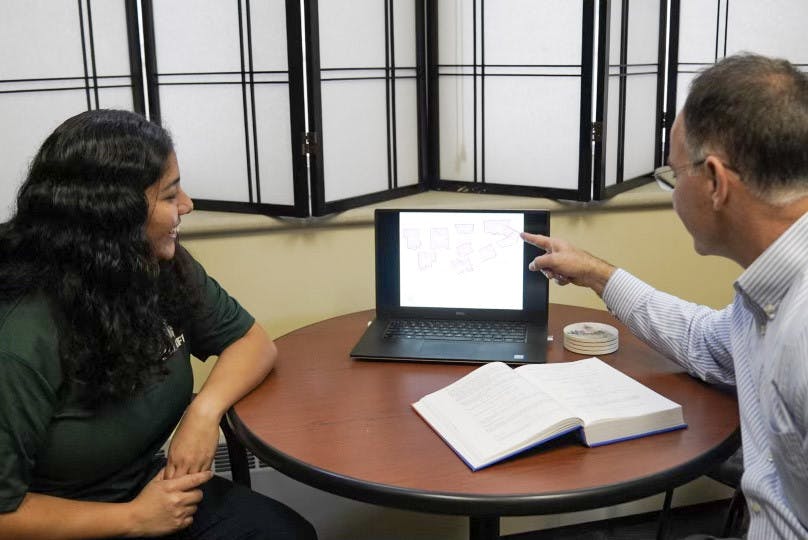Seven faculty research teams in MSU's College of Social Science received funding of up to $30,000 each from the Michigan Applied Public Policy Research, or MAPPR, grant program. At the start of each academic year, the Institute for Public Policy and Social Research, or IPPSR, selects research projects to be funded through the program.
IPPSR Associate Director Arnold Weinfeld and Director Matt Grossmann reviewed the MAPPR proposals in search of projects that directly address and guide policy issues in Michigan.
“What draws us (to a project) is what's going on in and around the state of Michigan in terms of policy issues that legislators, the administration, or people are facing,” Weinfeld said. “So, we look to those projects that people are proposing, that will have an impact on that particular discussion moving forward.”
The advancement of the mass timber industry
One project that received a MAPPR grant is titled, “Assessing Mass Timber Public Interest and Demand in Michigan.” The grant was awarded to MSU’s Mass Timber Program, which is a collaboration across MSU extension, the Department of Forestry and the School of Planning, Design and Construction. This research team includes Director of Mass Timber Sandra Lupien, Dr. George Berghorn, Dr. Raju Pokharel and Dr. Emily Huff.
According to Lupien, mass timber is an umbrella term referring to a variety of large engineered wood typically made by adhering pieces of wood and pressing them together. The end results are large columns, beams or panels which are used in building construction. Due to the fact that mass timber is a renewable resource, buildings using mass timber are more sustainable and their construction produces fewer carbon emissions.
Mass timber was not used in Michigan until 2021 in the construction of the university’s STEM Teaching and Learning Facility.
The team’s mission is to increase mass timber construction and manufacturing in Michigan and the surrounding region. Lupien said in order to make this advancement, the team must research crucial questions regarding the use of mass timber, such as what barriers prevent people from using mass timber and how those barriers can be removed.
Dr. Berghorn will also be working to develop a curriculum to teach architects and engineers how to build with mass timber. Additionally, Dr. Pokharel will conduct a mass timber supply chain analysis for Michigan, and Dr. Huff will conduct an accompanying demand survey of the Great Lakes region.
Lupien said that the MAPPR funds will go primarily to surveying the demand for mass timber.
“The MAPPR funds enable us to really expand the audience for our demand survey so that we could not only understand and glean insights from the architecture, engineering and construction industries … but now we're able to expand our audience to survey potential occupants of mass timber buildings,” Lupien said.
Through this, the team hopes to be able to inform prospective manufacturers more accurately, increasing the use of mass timber in the state.
Detroit’s Neighborhood Stabilization Program
Another team that received the MAPPR grant is Dr. Mark Skidmore and Ph.D. student Camila Alvayay-Torrejon. The team’s research is titled, “The Effect of Blighted Property Removal: Evidence from the neighborhood stabilization program in Detroit,” and it aims to analyze the effects of the city’s Neighborhood Stabilization Program.
The 2008 Neighborhood Stabilization Program was a federal program that gave money to cities across the U.S. This was a place-based policy, which meant that targeted areas received the funds. In Detroit, funds went to nine specific neighborhoods which had been gravely affected by population decline and the collapsing housing market. The city determined that in these nine areas, the money would be used to fund demolitions—which were usually not followed by rebuilding.
Skidmore and Alvayay-Torrejon are focused on determining whether the demolitions were effective in the short run in facilitating urban renewal and increasing property value.
To conduct the research, the team analyzed information from the city portal regarding the demolitions and quarterly financial reports. They are also looking at the Zillow database, which contains property prices through the years. Through statistical analysis, the team is able to isolate and understand the effects of the policy on the Detroit property market.
According to Alvayay-Torrejon, who is working on the project as part of her Ph.D. dissertation, this research is important because the demolition program is still used in Detroit and cities across the country today. She said that due to the funding and time being put into these projects, the government must know if the demolitions are working.
Once the research is complete, they will share the results to be used to aid policy-making in Detroit and other cities across the country.
In addition to funding the team's research, the MAPPR grant offered reassurance that what they are doing matters.
Support student media!
Please consider donating to The State News and help fund the future of journalism.
“It's nice that other people think this work is important too,” Skidmore said. “(The grant) is confirmation that the work that we're doing is incrementally adding value to both policy evaluation research in general.”
Discussion
Share and discuss “Public policy and social research teams receive up to $30,000 in funding” on social media.






